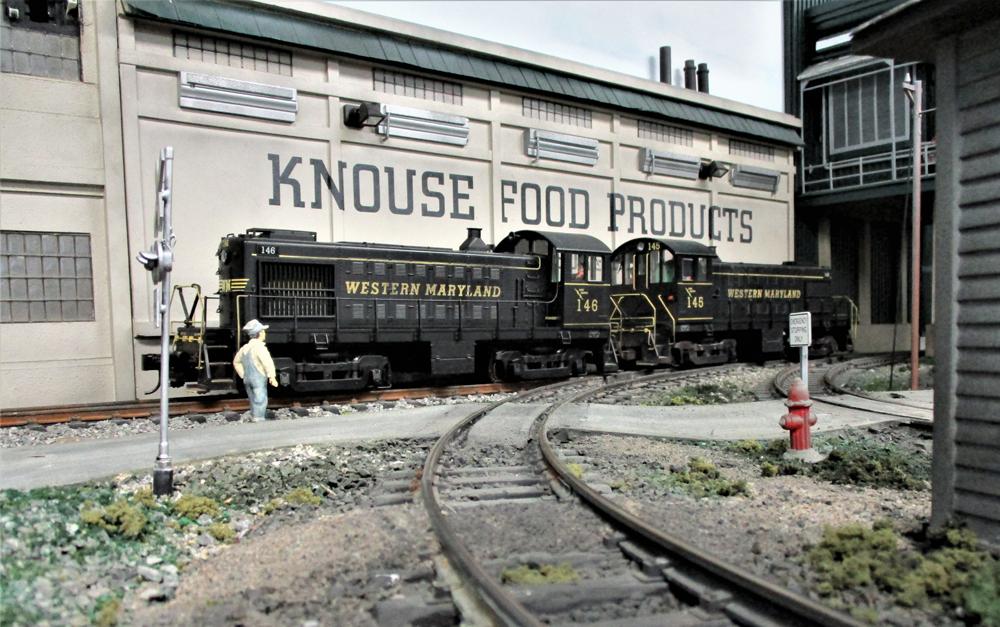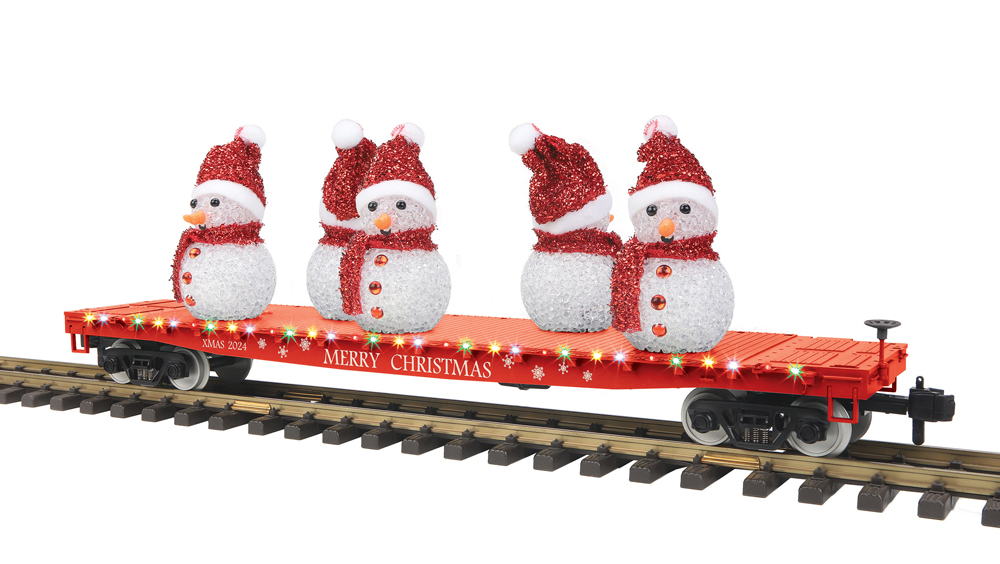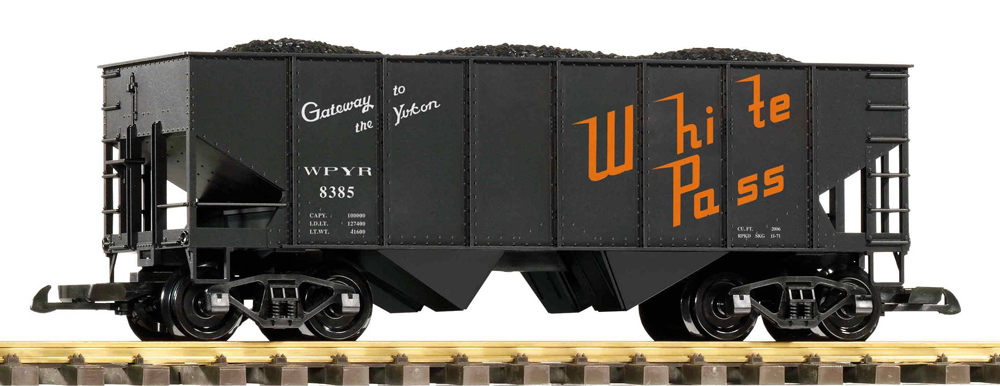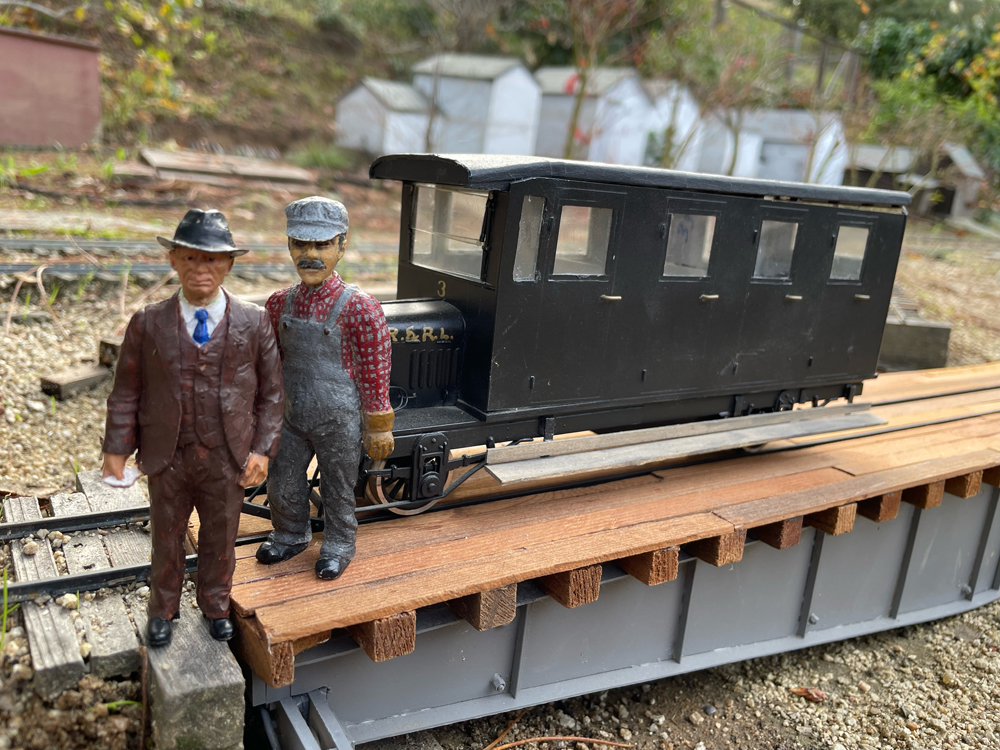Meet Bill Barnwell
In a paragraph, how did you get started in the hobby?
I got started in trains at the age of six with a Lionel 027 steam freight set and an oval of track under the Christmas tree. I still remember the smell of electric ozone in the air, laying on the rug at the end of one of the straightaways, flinching every time the engine came by. My dad made a mountain out of a cardboard box with a tunnel on two sides with portals drawn in (he was a very good artist ). He added a building from a Log Cabin brand syrup can, which looked like a log cabin but it replicated a goods depot.
I spent the whole day loading and unloading old thread spools and small boxes from the log cabin to the flatcar, boxcar, gondola, and back again. Of all my 78 years, that Christmas remains my most memorable one. I was given the dining room to set up a train layout. I had this train from 1948-1959. This process started my love of trains and my desire to make them look real.
What was your first large scale locomotive?
Seems like my happiness always begins on a Christmas morning. Under the tree in 1998 was an LGB No. 2010 passenger set from my wife with a 4′ diameter track and transformer. I was amused, but not really elated. I cautiously asked what made her get it for me. Her reply was, “You work too much and don’t have any hobbies.” I thanked her, then heard her say, “You can put them outside.” Then came the elation! It wasn’t long before I added track, plants, and the saga began.
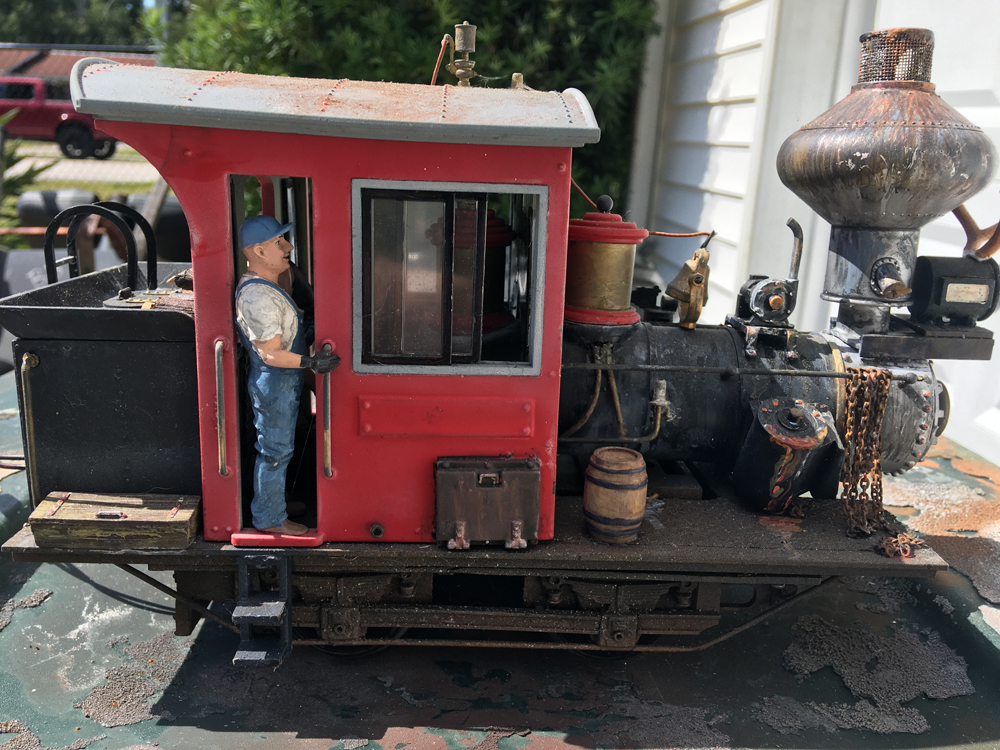
What project have you been working on recently?
I am working what I call a “mini Heisler,” because there is only 1 drive truck, V cylinders, and no showable link between the cylinders and the wheels. I got the idea from Pinterest while viewing On3 scale engines. Parts used: PVC coupler, LGB No. 2010 cylinders, Rogers 2-4-2 cab, Bachmann onion stack, part of an Echo tender, ladder from a Bachmann tender, domes from a Lionel 0-6-0 engine, and other parts from my workshop. I still need to add bolsters, cow catchers, and couplers.
What’s your favorite part of the hobby?
Kitbashing–making something out of the combination of old parts and new, whether it be a building, locomotive, train car, motor car, or a plant. This is the most enjoyable part of the hobby, when you can stand back and say “I made that” AND it works.
I worked in the dental field for more than 45 years, installing and repairing dental parts so I have come across some strange looking parts. I have used a bunch of them on my models. This isn’t an expensive hobby, only if you want it to be.
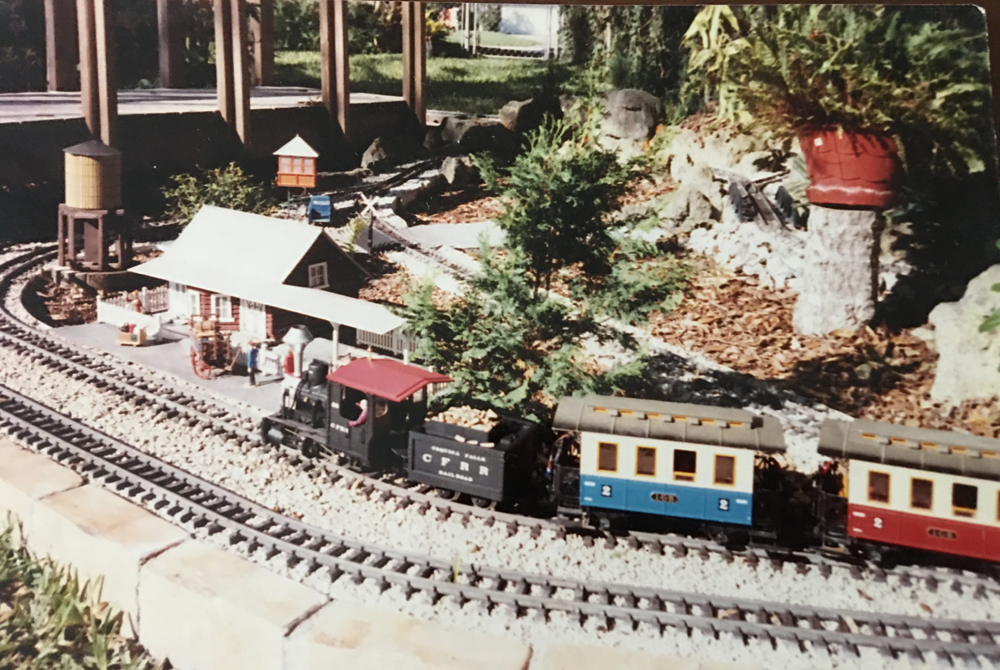
How about your least favorite part?
I would have to say wiring. Today, it is pretty simple with the advent of R/C and battery power, but in the early 1980s and 90s that wasn’t the case. All the soldering, wondering if you did it right, hiding wires, especially if it was an addition to an existing layout, troubleshooting shorts, laying on the ground with ants crawling over you, yuck. Consider wire at $.20 a foot and a layout that is 25′ x 25′. Just for 1 circuit to 4 locations costs $11.00; multiply that by 20 circuits that’s $220.00, plus the switches, you have over $300.00. That’s the cost of an R/C system with battery.

What was your biggest hobby success?
It’s very hard to choose. To me they have all been successful, but the one that I’m most proud of is my Mason Bogie build. William Mason designed and built the Mason Bogie and it was similar to the British Fairlie, but was much more powerful and efficient. Mason said that good working engines should be good looking as well, and my Mason Bogie looks like it just rolled off the assembly line. It’s the only engine in my stable that isn’t weathered.
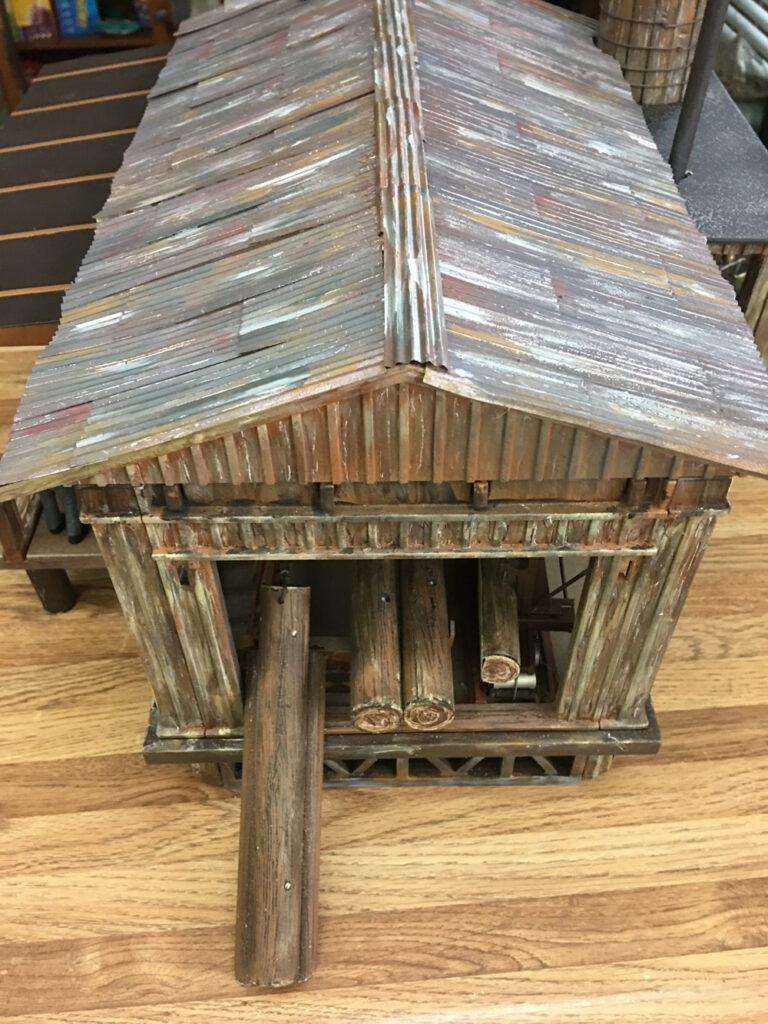
What’s your biggest mistake?
I’ve had some pretty close calls, but most of the time the “mistakes” turn out better than the original. If I had to pick the worst it would be my Playmobil sawmill.
The structure is made from leftover Playmobil western building parts. Without the help of Rene Schweitzer, who sent me an old article about setting up the interior of a sawmill by Dan Parker [See the October 2000 issue —Ed.], I probably would still be working on it.
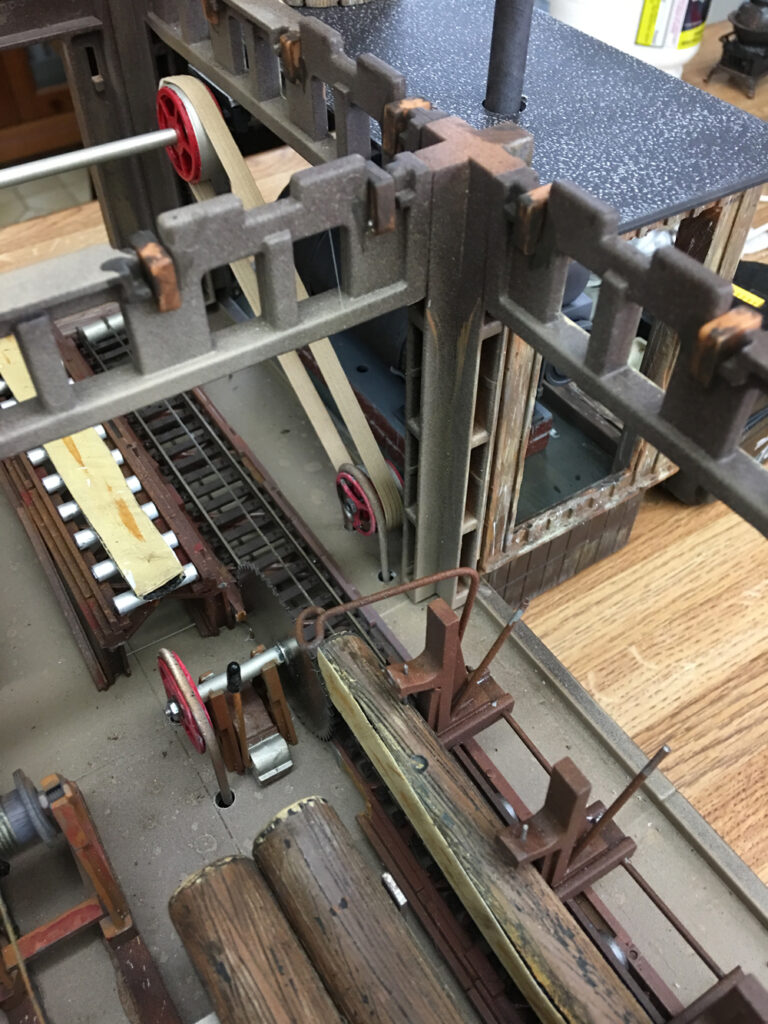
The error came at the time that I was adding the legs for the structure. I had glued the base together, and it was time for the base legs. After securely gluing them in and letting them dry for two days, I was ready to start on the walls. That’s when I discovered that I had glued them on the wrong side, giving me a mirror image of what I wanted! I changed the log input from side delivery to end delivery, and changed the floor plan to a different layout. It really wasn’t what I wanted, but using the “10′ rule” made it work. [If it looks good from 10 feet away, it’s ok. –Ed.]
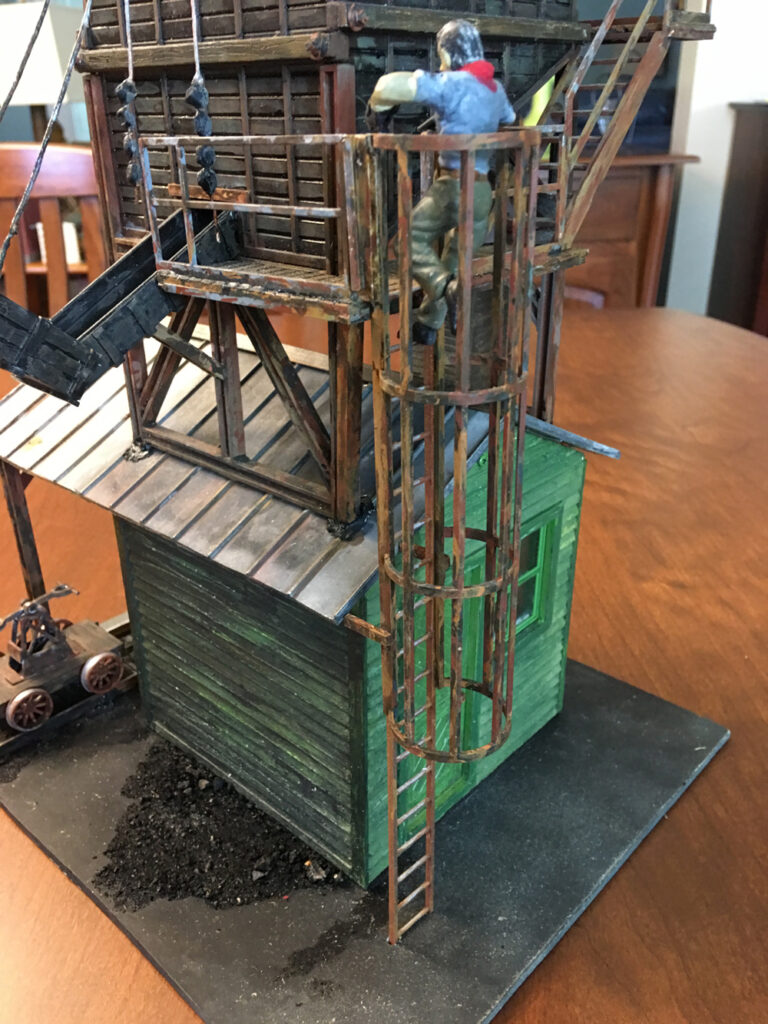
What advice would you give a new hobbyist?
Be patient and don’t hurry. Decisions you make today might not work tomorrow. Think things through. They didn’t build any railroad in a day, and you shouldn’t either. Put the track down in the form you would like to see it, whether it be N scale or large scale, run your trains on it and if you like it, then put it down … but I bet there is something you would like to change after two weeks.
In the club I belonged to myself and another member, we used to joke, “If you want to see different layouts each week go to Bill or Jed’s house” and it was true. After about three or four years I finally slowed down and settled on what I had.
I enjoy building stuff on the cheap, taking one building and making three out of it, oddball engines, different cars, making stuff you can’t go out and buy. I also like operations, taking a car from point A and leaving it at point B having to let a northbound passenger train put you to a siding before returning southbound. I consider round and round to be “beer time,” where you can socialize and not think about which switch needs to be thrown.
Modeling encompasses many parts of the hobby. You might like building structures or engines, perhaps cars, or just running trains. Have fun with it!
See some of Bill’s projects
Cheap lighting for passenger cars






